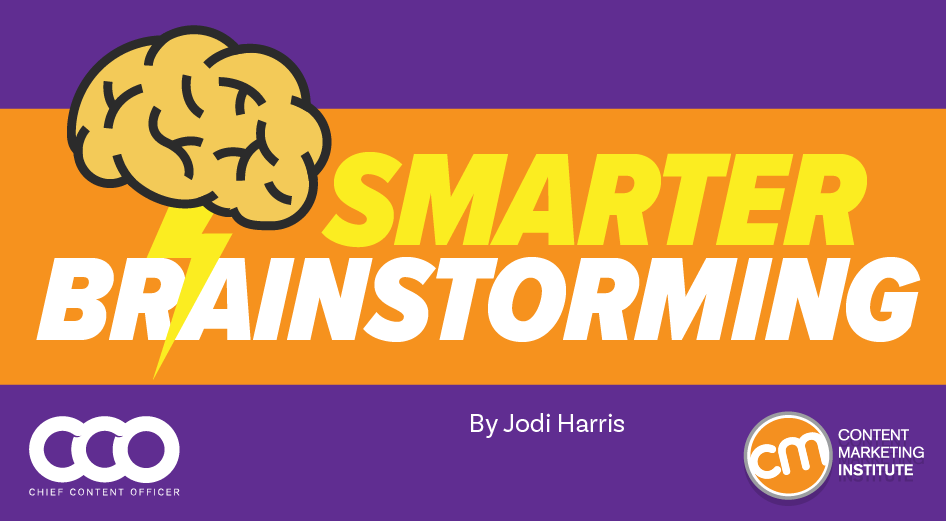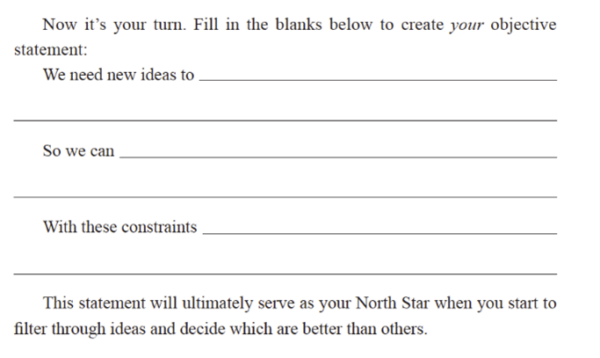
Re:Think Innovation author Carla Johnson warns content marketers about brainstorming without doing anything to prime the work.
Omitting the critical preparation step, she says, prevents fresh inspiration. It can also lead to ideas that lack the proper audience focus, don’t align with your content strategy, and fall outside execution capabilities.
To help marketers avoid that trap, Carla developed an approach to generating valuable, viable innovation ideas. She calls it the Perpetual Innovation Process (PIP).
PIP shifts your team from their legacy thought patterns to surface novel ideas and manifests them into actionable marketing. It also builds a path around the pitfalls of traditional brainstorming.
Shift your #content team from legacy thought patterns to surface novel ideas and actionable marketing, says @joderama via @CMIContent. Click To Tweet
Here’s what the process involves and how you can use it to bring more exciting, innovative ideas to market.
Follow the Perpetual Innovation Process
Think of a marketing challenge for which you need an innovative solution. For example, you may struggle to think of a unique theme for a new brand podcast or create an event that advances your thought leadership.
Carla details each step in Re:Think Innovation, but with her permission, I’ve summarized the key points:
Set the stage
You need to know where you hope to arrive. So, before you start the perpetual innovation process, create an objective statement that puts the critical elements into focus.
“Setting an objective creates consensus about the outcome you’re ultimately looking to achieve. It helps you decide what problem you want to solve and how it bubbles up to your goal. It also aligns your team around the work that will need to get done,” Carla says.
Use Carla’s simple template (below) to set that objective. Fill in the blanks to detail why you need ideas, what they’re meant to accomplish for your business, and what constraints you’ll face on the way:
- The intention: “We need ideas to ___.”
- The impact: “So we can ____.”
- The realistic conditions: “With these constraints ____.”

Establish a brainstorming objective: We need ideas to ____, so we can _____, with these constraints _____ via @CarlaJohnson @joderama @CMIContent. Click To Tweet
Carla says constraints are part of the equation to come up with innovative ideas rather than just creative ones. “Anybody could have an amazing idea if they didn’t have to work within constraints like budget and time,” she says.
Setting real-world boundaries pushes a more disciplined form of thinking. “It provides a more cohesive view of your brand, which can spark opportunities to tell bigger, more impactful stories than the ones you initially envisioned,” Carla says.
Seek inspiration and make purposeful connections
Next, set your objective aside (you’ll return to it later) and work through the five steps in Carla’s innovation framework. In the end, not only will you have a stream of actionable ideas, but you can pitch them to secure stakeholder buy-in:
Step 1: Observe. Pay attention to the world around you, using all your senses. For example, you might see children, a ball, a few squirrels, or some trees if you’re outside. If you close your eyes, you might hear music playing faintly somewhere, smell food cooked on a grill, or feel a warm breeze.
You don’t need to ascribe any meaning to your observations or focus on an objective. Simply be mindful of your surroundings and write each detail you notice.
Step 2: Distill. Scrutinize those individual details and discern their meaning in relation to each other. Look for similarities and categorize them into larger groups and patterns. For example, if you group children and a ball, that might bring to mind the idea of play; the sound of music and the smell of the grill could connect to ideas of entertainment or friendship.
Step 3: Relate. See where opportunities might exist to tell a bigger story about your brand. Compare the similarities and differences in the identified patterns and look for ways they might fit into your working world.
Ask yourself: “How might we transplant the ‘essence’ of friendship into our event challenge?” Or, “How might we apply the idea of play to the theme of our podcast?”
Not all patterns will translate but remember: There are no wrong connections, just ones that may not fit your needs. Prioritize the most evident connections to your business for step four.
Step 4: Generate. Solidify those abstract ideas into real possibilities. Take the broad list of how-might-we questions from the previous step and generate as many content ideas as possible for each. Don’t set any limitations. In fact, the wilder and crazier your ideas are, the closer you get to a truly innovative – and executable – idea. Form them as what-if questions, such as “What if we tried to …” or “What if we combine X and Y into …?”
Systematically probe the viability of each one after the ideas stop flowing. Use the constraints from your objective statement to make go or no-go decisions on which to develop. Whittle the go idea list by asking practical questions. For example:
- Does the idea align with the brand’s priorities?
- Is it something the audience needs right now?
- Does the team have the bandwidth and budget to see it through?
- Will implementation require unavailable capabilities or technologies?
- Will other functional teams need to get involved?
Step 5: Pitch. You’ve already done the hard work by the time you reach this step. Carla refers to the pitch as “the journey of an idea, told in the form of a story.” If you can’t pitch the idea so others will understand and embrace it, you’ll never get it off the ground.
If you can’t pitch an idea so others embrace it, you’ll never get it off the ground, says @CarlaJohnson via @joderama @CMIContent. Click To Tweet
Tell the story of your idea, starting with observe (step one) and working the idea through generate (step four). Present that story through the lens of your audience. Think about what matters to them and how your idea will fit into their world as a cultural product.
Formulate three versions of the pitch – 30 seconds, 90 seconds, and five minutes. Practice delivering each one until you are comfortable enough to deliver them to your stakeholders.
Prepare to conquer your innovation challenges
With a systematic process for generating fresh – and properly focused – ideas, your team can rev up your creative output – and ramp up your ability to add real value to your brand’s experience.
Editor’s note: This article originally appeared in CCO.
HANDPICKED RELATED CONTENT:
Cover image by Joseph Kalinowski/Content Marketing Institute




